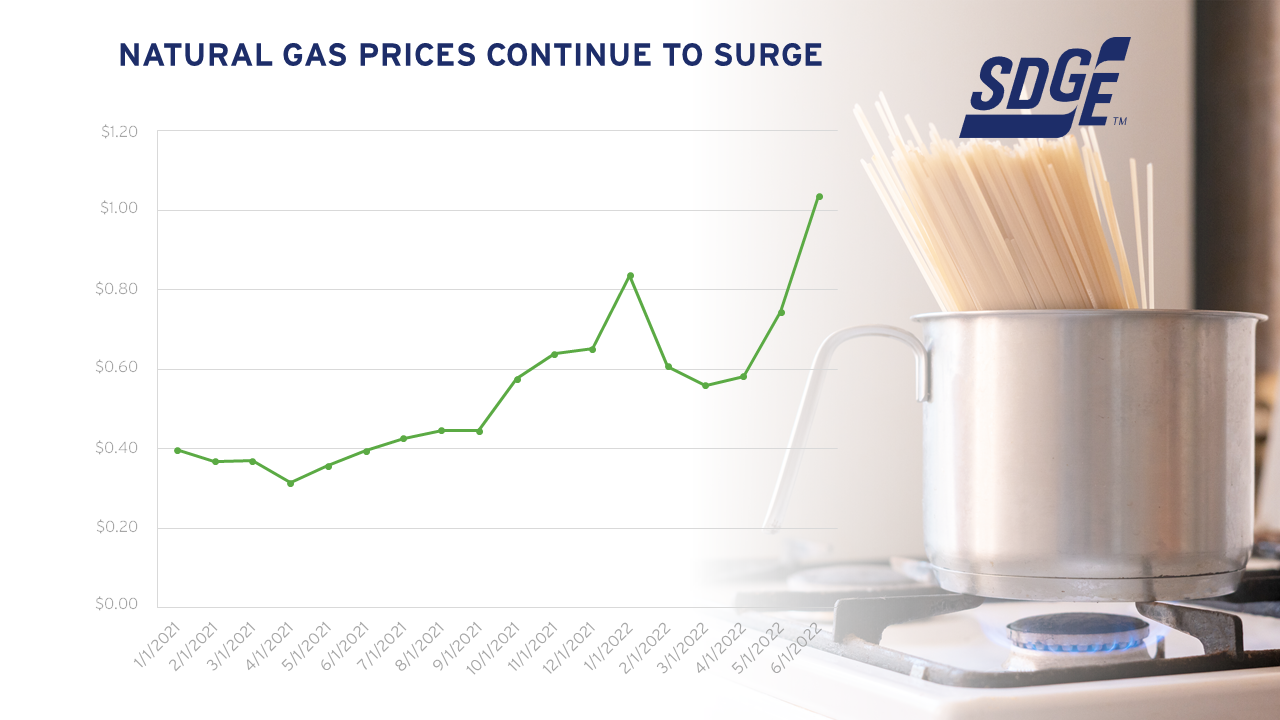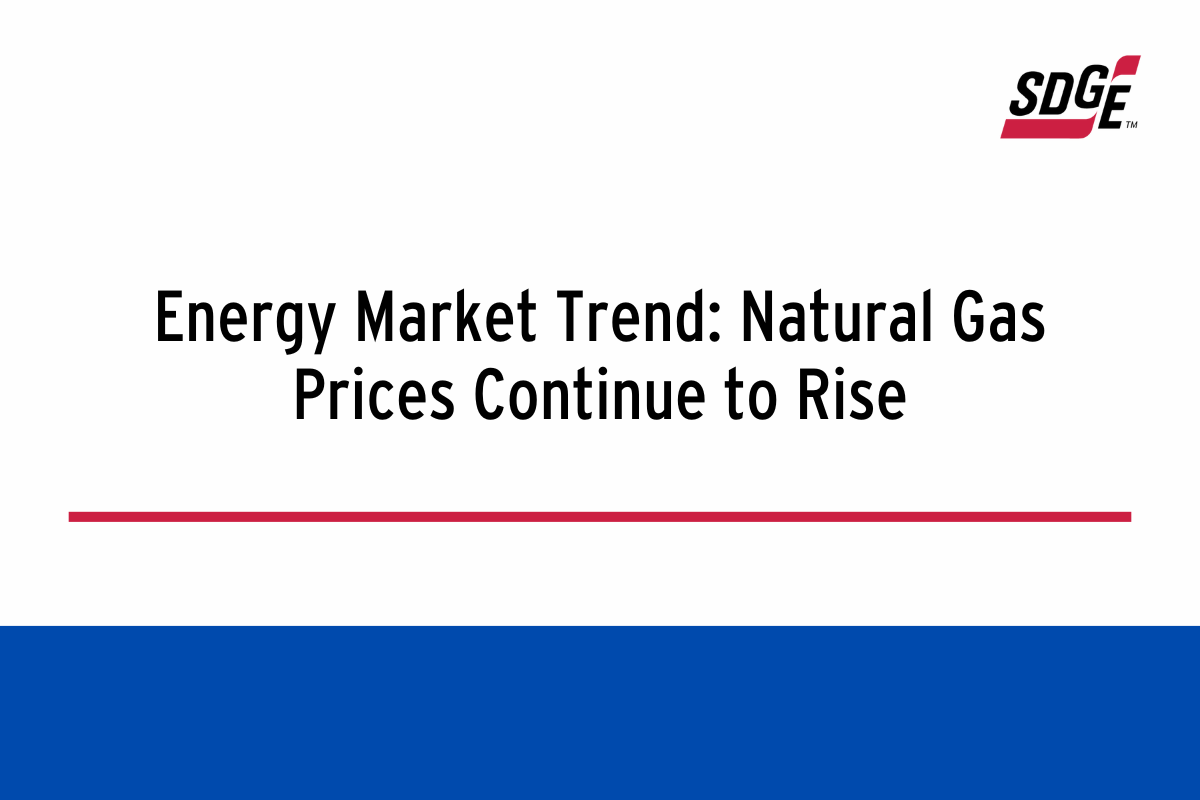
Due to a combination of circumstances, including the Russia-Ukraine conflict and global demand outpacing supply, natural gas prices in recent months have reached levels not seen since 2008.
SDG&E buys natural gas – a globally traded commodity – to serve our customers who use gas appliances and for our power plants to generate electricity. Therefore, both gas and electric customers will see their bill affected by fluctuations in the natural gas market.
What SDG&E pays to buy natural gas in the wholesale market has increased by 265% year to year, going from 40 cents per therm in June 2021 to $1.06 per therm in June 2022 (excluding the cost of delivery and mandated surcharges). SDG&E does not make a profit from the sale of gas to our customers. If we pay a dollar for natural gas in the wholesale market, customers pay a dollar.
Gas Usage Tends to Be Lowest In Summer
Keep in mind natural gas prices are updated every month on customers’ bills and the amount customers use vary month by month. Gas usage tends to be lowest in summer months for residential customers – averaging around 15 therms per month, compared to winter months where average peak usage tops out at 45 therms. December and January are typically the highest natural gas use months due to colder weather. In January 2022, the average residential customer’s gas bill was $95. In May, it had dropped to $34.
The impact of higher natural gas prices on electric rates will be delayed, because electric procurement costs are typically updated once a year.
What SDG&E does to Mitigate Gas Procurement Costs
To get the best possible prices for our customers, we use a suite of tools to make purchases from a diverse pool of suppliers, trading locations and production basins. Our natural gas supply portfolio includes long-term contracts, baseload purchases (buying ahead of the delivery month), and use of gas stored underground. In addition, we continuously monitor weather, demand, and market dynamics to minimize pricing fluctuations for our customers.
A combination of factors influences natural gas prices, including production levels, maintenance events, weather, global events, market conditions, and customer demand. Any one of these factors can cause natural gas prices to go up or down.
According to the American Natural Gas Association, whether gas prices will continue to climb in the coming months will depend on whether summer weather is mild or sweltering, how much more gas will be needed to generate electricity in the summer, as well as how quickly the U.S. will be able to replenish its storage inventories before the winter heating season begins.
Energy Savings Tips
-
Turn down the temperature on your water heater.
-
Take shorter showers.
-
Fix leaky faucets and pipes. Hot water leaks cause increased demand on the water heater which increases natural gas use. One drop of water per second can waste 500 gallons of hot water per year.
-
Limit use of non-essential natural gas appliances such as spas and fireplaces.
More energy savings tips can be found at Energy Management | San Diego Gas & Electric (sdge.com).


